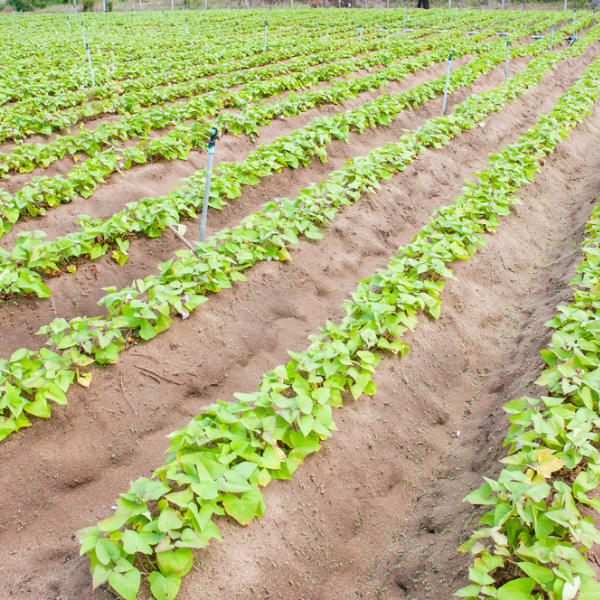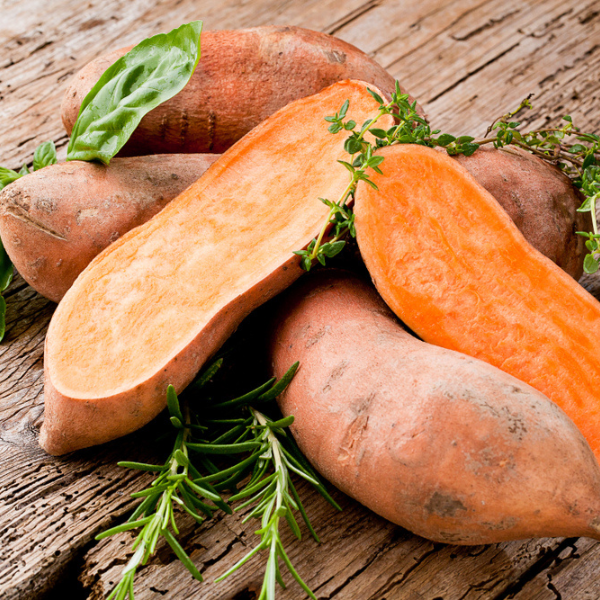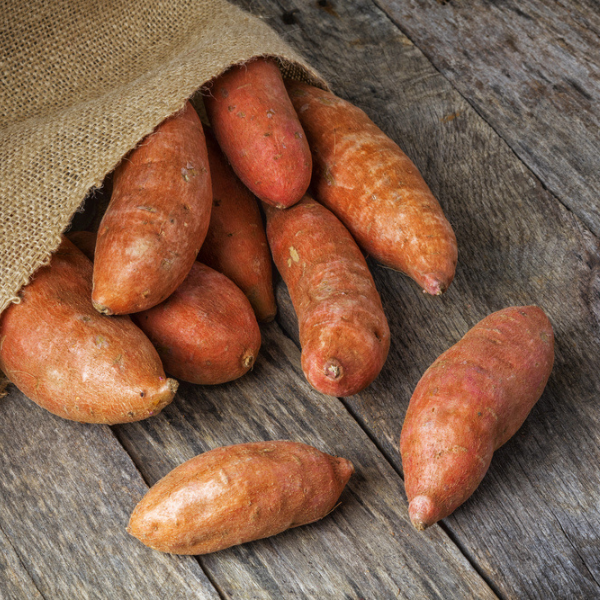Sweet potatoes are a staple to the American Thanksgiving traditional, but are continually growing in popularity from use in salads to being served as French fries. If you are a home gardener, it should be noted that they are incredibly easy to add to your list of produce.
Although this tropical crop must have at least 4 months with warm weather and warm topsoil, it can withstand heat, drought, and has few pests or diseases. There are now several short-season types of sweet potatoes, despite the fact that they are typically more of a Southern crop. When cultivated in sandy dirt or raised beds with a black plastic mulch to keep the soil warm, they can be grown in the North.
As a member of the morning glory family, the sweet potato is a tropical plant. The edible section of sweet potatoes is a tuberous root rather than a real tuber, which is another distinction between them and "regular" potatoes
Optimal Growing Conditions For Sweet Potatoes
From tropical to temperate areas, this warm-weather crop is grown everywhere. Home gardeners prefer the moist, deep orange varieties. Texas is a major producer of sweet potatoes since the state's hot days and cool nights are excellent for their growth. Sweet potatoes can withstand a lot of heat.
As long as the soil temperature is higher than 55°F, they can endure minor frosts as well. Bear in mind that sweet potatoes are not cultivated from seed. Instead, slips, which are sprouts made from mature sweet potatoes, are utilized to cultivate them. Slips are frequently offered through neighborhood garden centers and nurseries, as well as by local farmers at farmers markets and mail-order businesses.
There are also a few different methods to start your own. As these plants are of tropical origin, you should wait to plant them until the ground has fully warmed up. Sweet potatoes can grow in poor soil, but in thick clay or sand, the roots may become distorted or stringy.
Sweet potatoes are frequently planted in elevated rows that are about 8 inches high to give them a good start. They remain well-drained and the soil warms up more quickly as a result. When you're growing in a cooler area, covering the soil with black plastic will also help the ground warm up and stay warm.

How To Plant & Grow Sweet Potatoes
Sweet potatoes are particularly frost sensitive and reach maturity in 90 to 170 days. Three to four weeks after the last frost, plant in full sun once the ground has warmed. Plant around 6 inches deep. The roots of the plant slide into the prepared soil. Place the slip so that the top half, which contains all of the new leaves, will be above ground and the bottom half will be covered in dirt.
To secure the plant and eliminate any lingering air pockets, gently push the ground around it. Make sure not to hurt the young plant. Sweet potatoes dislike being too excessively bruised or jostled. Mulch the vines two weeks after planting if you're not using black plastic to smother weeds, retain moisture, and keep the ground loose for root growth.
Lift longer vines periodically to prevent them from establishing roots at the joints. If they do, the main crop at the base of the plant will not ripen since their energy will be directed toward producing many small tubers at each rooted place. Otherwise, avoid handling plants too much to avoid creating wounds that can harbor disease spores.
If you live in a cooler area, it might be worth cultivating potatoes indoors or in a greenhouse instead of in a vegetable patch because it will require about 100 consistently warm days to generate a good harvest of tubers. The amount and quality of the crop will be improved by keeping the area free of weeds, particularly in the first 40 days following planting.

Sweet Potato Care & Maintenance
Place your sweet potatoes where they will receive full sun to partial shade. Although they appreciate little midday shade in hot, dry locations, they typically prefer full sun.
Sweet potatoes love soil that is rich in organic content and well-drained. Dense, clay soil is favored to sandier soil. Sweet potatoes can survive in dry soil once they are established. It's preferable to maintain a consistent moisture level by providing an inch of water once every week.
To avoid the mature tubers splitting even in the final three to four weeks before harvest, don't water your sweet potatoes. Maintain moisture in the plants, especially during dry seasons.
Harvesting
Although a crop can be harvested as soon as the leaves begin to turn yellow, both yield and nutritional quality increase with time in the ground. However, if frost has turned the vines black, tubers can die very quickly. On a sunlit day when the topsoil is dry, dig tubers using a spade. Keep in mind that tubers can extend up to a foot from the parent plant, and any dings in their delicate skin can promote rotting. Keep any dogs or pets away from newly planted sweet potatoes.
Tubers should be dried in the sun for a few hours, moved to a place with good ventilation, and kept between 85 to 90 degrees for approximately ten to fifteen days. Once they have cured, store them at a temperature of around 55 degrees and a humidity between 75 to 80%. Sweet potatoes can last for several months if they are properly preserved and cured.
Your potatoes could be a smaller size if your growing season is shorter, but they will still taste just as delicious as larger potatoes. To guarantee that none of your produce is lost to frost, keep an eye on the forecast and harvest the sweet potatoes as soon as the nighttime temperatures drop into the 40s or 30s.
Unlike with other potatoes whenever the stems or vines begin to die back, sweet potatoes really don't give off any signs when they are ready. Until a frost or freeze stops them, sweet potatoes will keep on growing and producing.

Common Pests & Diseases
Gardeners in the South are more prone than those in the North to have bug issues. When cultivating sweet potatoes in backyard gardens, the main concerns are wireworms and root-knot nematodes. Sweet potato weevils, 14-inch long insects with reddish-orange bodies and dark blue heads and wings, pierce stems and tubers to implant their eggs.
Adults typically attack vines and leaves, while actively developing larvae tunnel and eat the fleshy roots. Additionally, they propagate foot rot, which results in expanding brown to black spots on stems close to the dirt and at stem tips.
A fungus called stem rot, sometimes known as wilt, attacks plants that have been harmed by insects, negligent handling, or wind. Plants with sick roots should be destroyed, or you can put them in sealed containers and throw them away with household rubbish.

